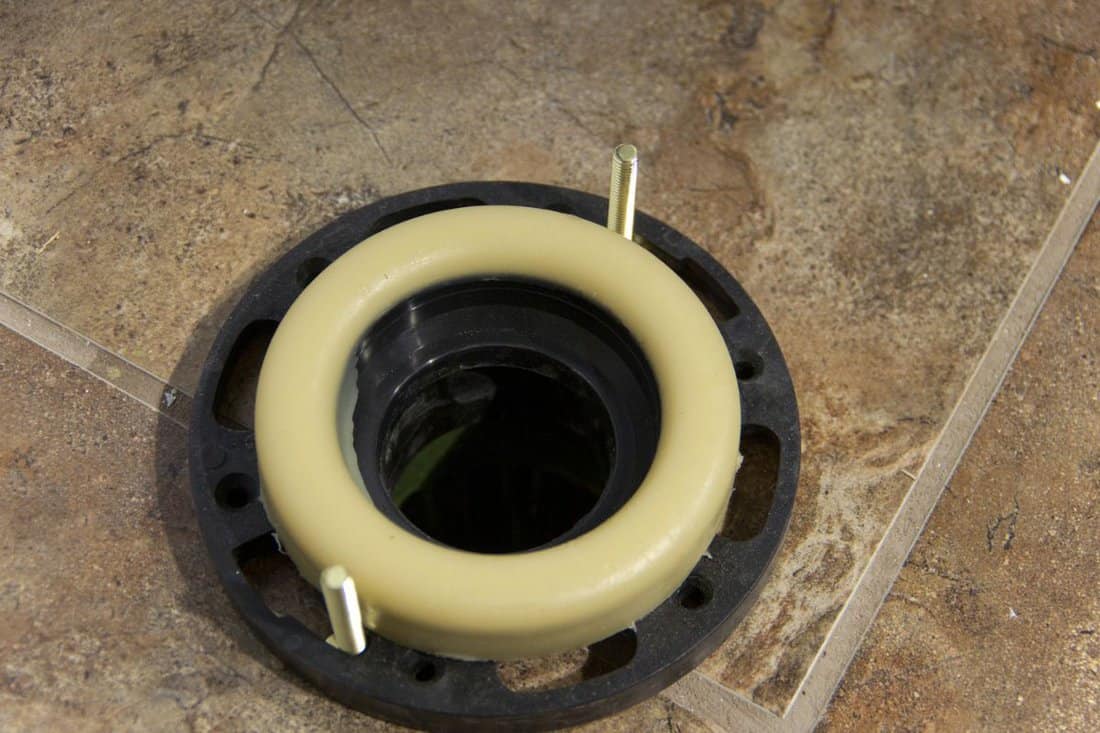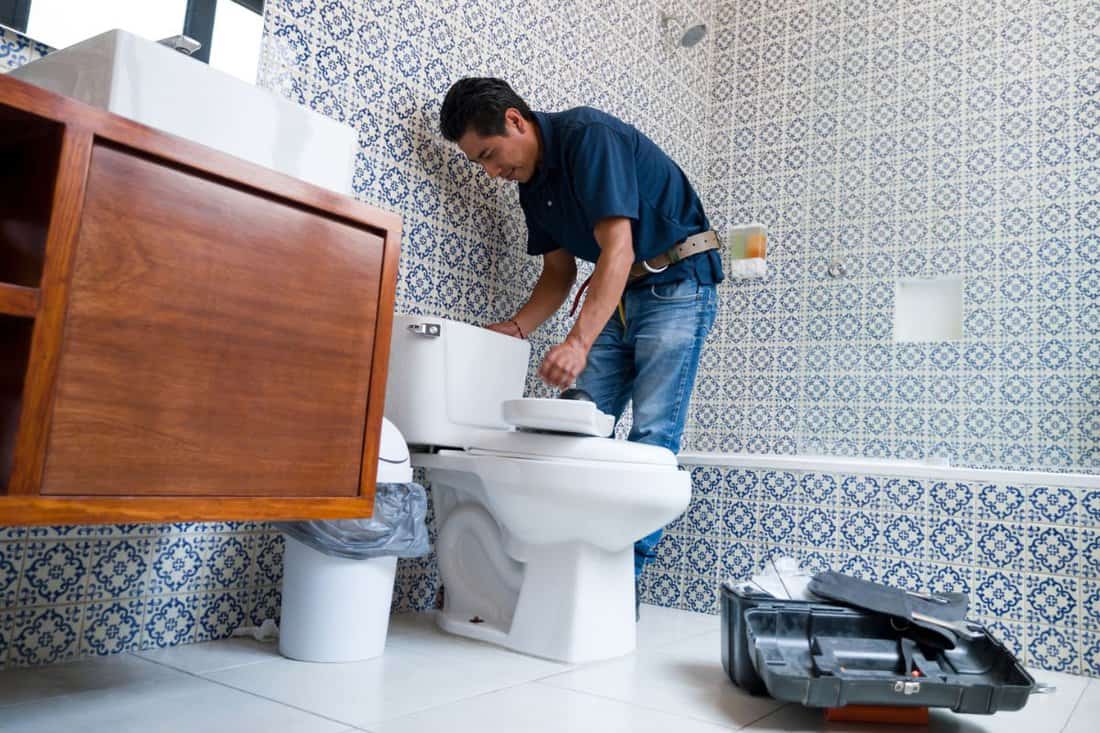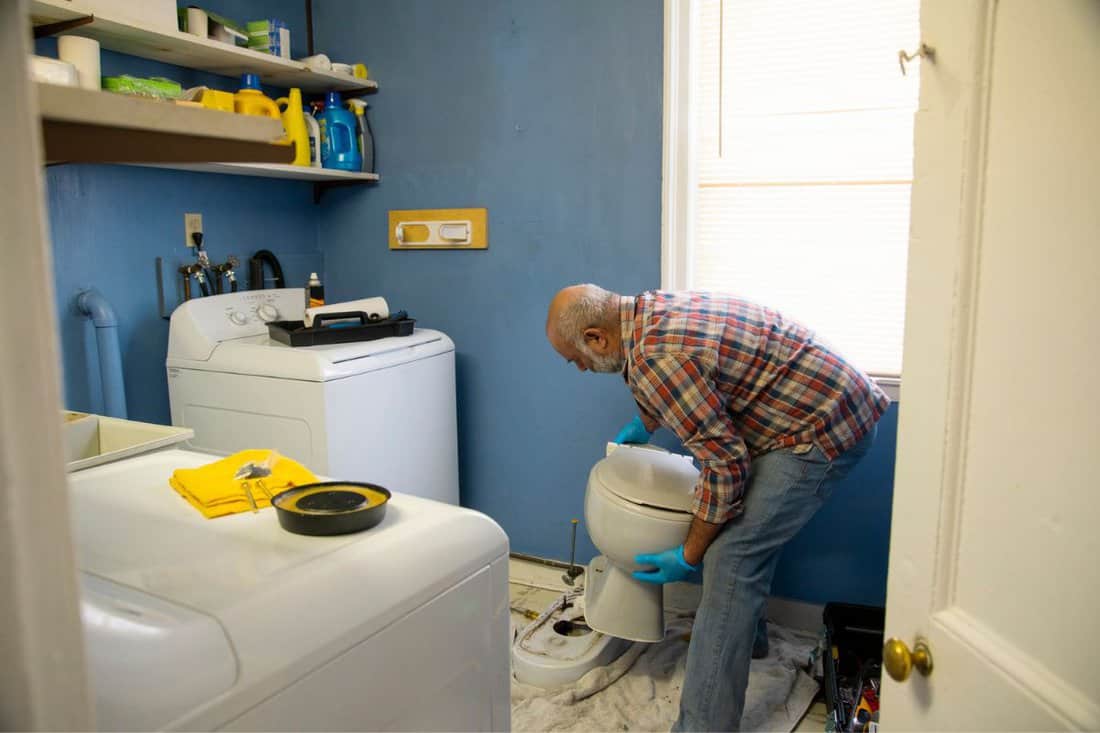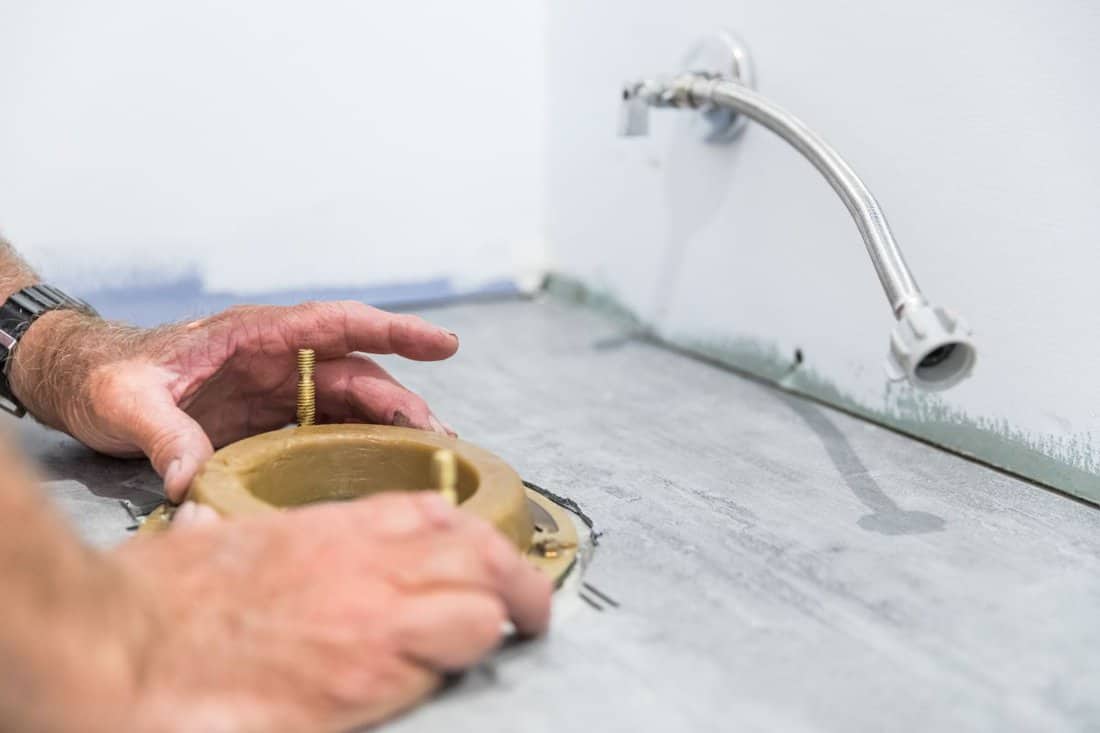Making the right decision between wax and wax-free toilet seal now could spare you potential headaches. You can only avoid dealing with a leaky toilet by installing the toilet seal correctly. So, should you use wax or wax-free toilet seal? For your guidance, we gathered the data.
Choosing between a wax or wax-free toilet seat is entirely based on your preference. However, you need to weigh the advantages and disadvantages of each method. The wax ring offers an established technique, whereas the wax-free solution is clean-up free.
Skilled plumbers use both sealing solutions periodically, depending on their preferences and the work demands.
In the past, installing an entirely new wax ring was the only option for repairing or replacing a toilet seal. But we now have alternative options that create choices. Keep reading to learn how the two solutions differ from one another.
![Close up photo of ceramic bowl toilet in domestic bathroom with a box of tools. - Toilet Seals - Wax Vs Wax Free? [Considerations For Homeowners]](https://homedecorbliss.com/wp-content/uploads/2022/10/Close-up-photo-of-ceramic-bowl-toilet-in-domestic-bathroom-with-a-box-of-tools.-Toilet-Seals-Wax-Vs-Wax-Free-Considerations-For-H.png)
Which Toilet Seal Type Should You Pick
There are various methods for creating a strong toilet seal that can help avoid leakage from the bottom of the toilet. We'll review these two varieties, wax vs. wax-free, of toilet seals to help you decide on a choice that best suits your requirements.
Wax Toilet Seal

We sometimes add affiliate links and content that was curated and created by our team with the help of advanced ai tools to help showcase the best design styles.
Wax toilet seals are more conventional and hence widely utilized in most homes. Their repeated use can be attributed to these advantages:
Advantages
- Extremely resilient and long-lasting
- Affordable
- It works perfectly with high flanges that can't be adjusted. The weight of a wax-coated toilet bowl on a flange ensures a tight seal. Please note that the level of the bathroom flanges has a significant impact on how well the toilet bowl installation works.
Disadvantages
- Wax toilet seals can be messy.
- They are more difficult to use. So, it can take a few tries to position the toilet bowl properly.
- You cannot reuse the wax sealant. Therefore, you may need to mold a new sealant with every attempt you make to seal the gap.
- It is not ideal for heated floors since it can gradually shift and melt.
Wax-Free Toilet Seals
Wax-free toilet seals provide a more straightforward toilet sealing solution. Most wax-free toilet seals are constructed from thick yet sufficiently flexible rubber to allow any necessary installation rebalancing.
Advantages
- Mess-free because it doesn't contain wax.
- Adjustable and simple to use.
- You can use it on any floor without worrying about its temperature.
- You can use it on flanges that are placed too low without adapters.
Disadvantages
- Costlier than the wax alternative.
- It has lower durability than a wax solution.
- It has a shorter warranty period, valid for about 10 years, while the wax warranty can last up to 20 years.
Types of Toilet Seals

Toilet leaks are unpleasant. We've provided a list of the toilet seals you can use to fix a toilet leak swiftly.
Wax Ring
Wax rings are just rings made of wax; they don't have sleeves. You can use the wax ring in ideal circumstances where the flange is 1/4-inch above floor level and the drain measures 3 or 4 inches.
Wax Ring With Sleeve
Like the standard wax ring, the wax ring with sleeves is ideal for waste lines whose diameter measures 3 or 4 inches. However, the flange height doesn't have to be 1/4 inch.
You can use the wax ring with sleeves for flanges that sit at or slightly below floor level. You only need to vary the wax ring's thickness to suit your need.
Some wax rings have polycarbonate sleeves to extend the waste line's opening, thus enhancing correct bowl alignment.
Wax Ring With Felt
Felt is added to wax rings to secure the wax in place. These wax rings with felt are used to seal urinals and wall-hung toilets.
Sponge Gasket
Many sponge gaskets are constructed of solid rubber or silicone despite their name implying "sponge." The material offers a long lifespan and flexibility.
Like wax rings with felt, sponge gaskets are ideal for in-wall installations. Ensure that you choose a suitable thickness for the toilet seal from the numerous options available.
Wax-free Gasket
Wax-free gaskets are excellent for floor installations since they have deep-seal flanges and are constructed of sturdy materials like rubber.
Unlike wax rings, you can reuse or reset wax-free gaskets several times. Additionally, they have a leakproof O-ring that protects from splash-up and floor-flange rotting that would otherwise result from moisture.
View this wax-free toilet bowl gasket on Amazon.
Wax-free Foam Gasket
Waxless foam gaskets are made of soft foam that is more flexible than the rubber used to make wax-free gaskets.
You can use these gaskets on flanges 3/8-inch below or above the floor level. But you can stack them to suit your need if you require a toilet seal that measures more than these dimensions.
Many homeowners and plumbers prefer these gaskets because you can stack and reuse them, unlike the wax sealant counterparts.
Check out this wax-free foam gasket on Amazon.
When To Change A Toilet Seal

The toilet's wax ring forms an airtight barrier to prevent waste gas and water from leaking. So, it is best to replace the thick wax ring as soon as it begins to degrade.
Understanding the symptoms of wax ring failure can help you spot issues early and avoid having to make expensive plumbing repairs.
Unpleasant Odor
The toilet wax ring makes an airtight seal, preventing septic gas leaks from getting into the air surrounding your house.
Inhaling hydrogen sulfide gas is hazardous to your health since it has an offensive odor similar to rotten eggs. Therefore, the wax ring is probably broken if you notice this smell.
Waste Spillage
Water and garbage are prevented from dripping underneath the toilet by sturdy wax seals. So, chronic waste or water buildup at the toilet's base is most likely due to a defective wax ring.
That doesn't mean there couldn't be other issues leading to leaking. A wet tank or an exposed connector may also be the source of leaks. Before removing your toilet to repair the rings, check to see if there are any other potential problems.
If your bathroom was built over a crawl space or basement, look underneath it for cracks. Examining the flooring allows you to ensure the cement is still there.
Unsteady Toilet
A faulty flange can make a toilet wobble so much that it lifts one edge off the ground. In this situation, you must replace or fix the damaged component. The wax ring is frequently changed as part of the entire operation.
The wax ring may break due to continual movement and wobbling if the bolts become loose over time. Even a tiny gap can result in serious harm due to tension.
How Frequently Should You Change Toilet Seals

The wax seal exists between the toilet and the flange. The wax prevents leaks as water travels from the toilet to the drain pipe and blocks off offensive sewer gas odors.
The wax seal can last 30 years or the toilet's lifetime. However, you may need to change the toilet seal if the toilet is taken out and put back in or whenever the odor spills.
Conclusion
Choosing between wax and wax-free toilet sealant ultimately relies on your preferences since their ability to prevent leaking water from the base without harming the flooring is identical. Consult your plumber when you require new wax rings, as they can suggest quality ones for your house.
Here are related articles that you may want to read:
Should A Toilet Flange Go On Top Of The Tile Or Be Flush With The Floor?


